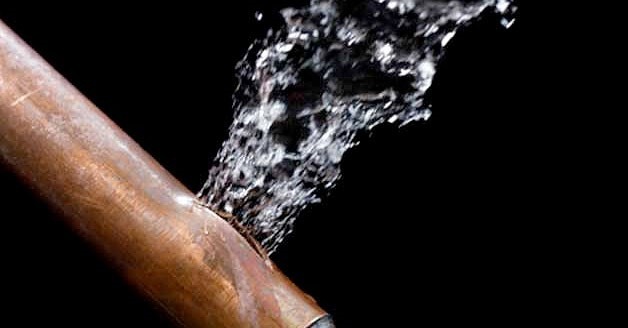How to Inspect If Your Home Has a Covert Leak
How to Inspect If Your Home Has a Covert Leak
Blog Article
Have you been on the lookout for insight around Locating water leaks?

The moment you locate a leakage, calling your plumber for fixings is the best remedy. Nevertheless, some tiny water leakages may not be visible. If you can not detect it with your naked eyes, right here are some hacks that aid.
Early discovery of leaking water lines can alleviate a prospective catastrophe. Besides conserving you money, it will certainly minimize the worry and also stress.
Examine Water Intake
If you detect sudden modifications, regardless of your intake being the same, it implies that you have leaks in your plumbing system. An unexpected spike in your expense shows a fast-moving leak.
Meanwhile, a stable boost monthly, despite the exact same practices, reveals you have a sluggish leakage that's likewise gradually intensifying. Call a plumber to thoroughly inspect your residential or commercial property, particularly if you feel a cozy location on your flooring with piping below.
Inspect as well as Analyze the Scenario
Property owners need to make it a routine to inspect under the sink counters as well as even inside cabinets for any bad odor or mold and mildew development. These 2 warnings suggest a leak so punctual attention is needed. Doing regular assessments, even bi-annually, can save you from a significant problem.
Analyze the Water Meter
Checking it is a guaranteed method that aids you uncover leakages. If it relocates, that shows a fast-moving leak. This implies you might have a slow-moving leakage that can even be underground.
Asses Exterior Lines
Don't fail to remember to check your outdoor water lines also. Examination spigots by connecting a garden hose pipe. Needs to water permeate out of the connection, you have a loosened rubber gasket. Change this and ensure all connections are tight. If you've got a lawn sprinkler, it will certainly assist get it properly checked out and also kept each year. One little leakage can squander tons of water and surge your water expense.
Do a Food Coloring Examination
When it comes to water usage, 30% originates from bathrooms. Test to see if they are running appropriately. Decline flecks of food shade in the container and wait 10 minutes. If the shade in some way infiltrates your dish during that time without flushing, there's a leakage in between the tank and also dish.
Check for discolorations and also deteriorating as a lot of devices and pipelines have a life expectations. If you think dripping water lines in your plumbing system, don't wait for it to escalate.
The minute you find a leakage, calling your plumber for repairs is the best option. Some tiny water leaks might not be visible. Inspecting it is a proven way that assists you uncover leaks. One tiny leakage can throw away lots of water and also spike your water costs.
If you suspect leaking water lines in your plumbing system, do not wait for it to escalate.
How to Know If Your Home Has a Hidden Leak
Water Meter Reveals Inexplicable Water Usage
If you’d like to test whether or not there’s a leak somewhere in your home, you can do this using your water meter. Here is how to conduct the test:
Don’t use any water in your home for at least 30 minutes; this also means not turning on faucets or water-using appliances.
Go outside, and check your water meter for activity.
If your water meter shows that there was activity, even though no one was using any water, this proves that there is a leak in your home.Visible Mold or Mildew Growth
Leaks behind walls create moist, dark environments that allow mold and mildew to grow and thrive. Eventually, you might see mold growth forming on the wall closest to a hidden leak.
If mold is growing in an area that receives a high amount of moisture, such as a bathroom, it may simply be an indication that better ventilation is needed. However, if you see mold growth on a wall or the ceiling in an area where you would not expect, you probably have a hidden leak.
Musty, Mildew Odor
Sometimes you might not be able to see the mold or mildew that is growing as a result of a leak. However, the smell can give the problem away just as easily. If you catch a whiff of something musty, there’s a good chance that old water is collecting somewhere in your home that you can’t see.
Stained/Warped Walls, Ceilings, or Floors
When your home soaks up water, a variety of red flags can become visible, including ceiling stains, bubbling drywall, warped walls, and sagging floors. While these issues can be caused by excess humidity, they can also be signs that a pipe or plumbing connection has started leaking behind your walls.
Inexplicably High Water Bill
After a while, you get a general sense for what your water bill should be. If you own a pool or sprinkler system, your bill will tend to be higher during summer. However, if you receive a water bill that seems especially high, and you can’t figure out what caused it, then you may have a hidden leak somewhere that’s increasing your bill.
https://www.plumbingjoint.com/blog/2019/july/how-to-know-if-your-home-has-a-hidden-leak/

I hope you enjoyed reading our excerpt about Detecting hidden plumbing leaks. Thanks for taking the time to read our piece of content. Do you know another person who is in to Finding hidden leaks? Please feel free to promote it. I enjoy reading our article about Finding hidden leaks.
Report this page